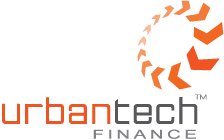- ENQUIRE ONLINE OR CALL US
- 08 8451 1500

The RBA’s interest rate statement for May 2021

The RBA’s interest rate statement for June 2021
The federal budget for 2021-22 has been handed down, outlining a range of steps to support home ownership and help small businesses recover from the coronavirus pandemic.
While the Australian economy has been faring well from the coronavirus compared with many other advanced economies, the government is hoping to secure Australia’s economic recovery by also providing tax cuts, investing in infrastructure and skills to create more jobs and providing incentives to business to hire, innovate and grow. In addition, the budget lays out record commitments on essential services, disability support, mental health, aged care and women’s safety.
In terms of the headline numbers, federal treasurer Josh Frydenberg announced a budget deficit of $106.6 billion for 2021-22. Stimulus measures already prompted by the Covid-19 pandemic have seen the national debt approach $1 trillion.
Here’s a breakdown of what’s in store and what it might mean for you;
Family Home Guarantee Scheme
A new measure is designed to help single parents purchase property. Starting on 1 July 2021, the new guarantee aims to support divorced or separated parents with dependent children by enabling them to purchase a home sooner with a deposit of as little as 2 per cent. The government will guarantee up to a maximum of 18 per cent of the property purchase price, allowing the applicant to get a loan without paying lenders mortgage insurance.
Applicants must be Australian citizens, at least 18 years of age and have an annual taxable income of no more than $125,000.
First Home Loan Deposit Scheme
The FHLDS [also known as the New Home Guarantee] which was launched last year, will be expanded for a second year, providing an additional 10,000 places in 2021-22. The scheme allow first home buyers seeking to build a new home or purchase a newly built home to be able to do so with a deposit of as little as 5 per cent without paying any lenders mortgage insurance.
Eligible borrowers can use the guarantee in conjunction with other government programs like the First Home Super Saver Scheme or state and territory First Home Owner Grants and stamp duty concessions.
First Home Super Saver Scheme
The government has said it will also increase the maximum amount of voluntary contributions that can be released under the First Home Super Saver Scheme from $30,000 to $50,000, effective from 1 July 2022.
This increase will fast-track home ownership for first home buyers as deposits required for home purchases have increased over the years given house price growth.
Personal Income Tax Cuts
About 10 million low- and middle-income earners will benefit from the tax offset, worth up to $1,080 for individuals [$2,160 for couples] earning between $48,000 and $90,000 being extended for 2021-22.
Superannuation Changes
A requirement for people to earn $450 per month before earning superannuation has been abolished meaning part-time workers earning less than $450 a month from an employer will finally be eligible to receive superannuation on those wages.
The superannuation rate will also increase to 12 per cent as legislated, despite speculation throughout the year the government would walk back the measure.
The government will also allow those aged over 60 to contribute up to $300,000 [$600,000 per couple] into their superannuation if they downsize their home – an incentive they hope will aide in freeing up more housing stock for younger families.
Pension Loan Scheme
The PLS is a reverse mortgage style loan offered by the federal government that allows borrowers of Age Pension age to receive a tax-free fortnightly income stream by taking out a loan against the equity in their home.
From 1 July 2022, the government will introduce a No Negative Equity Guarantee for the Pension Loan Scheme and allow people access to a capped advance payment in the form of a lump sum. It will mean that borrowers under the PLS, or their estate, will not owe more than the market value of their property, where their accrued PLS debt exceeds their property value. This brings the PLS in line with private sector reverse mortgages.
Eligible people will also be able to receive a maximum lump sum advance payment equal to 50 per cent of the maximum Age Pension – around $12,000 for singles, and $18,000 for couples. A maximum of two advances totalling up to the cap amount are permitted in a year.
SME Recovery Loan Scheme
The government is extending the Small and Medium Enterprise (SME) Recovery Loan Scheme, which builds on the SME Guarantee scheme, to support SMEs with a turnover of up to $250 million that were recipients of JobKeeper payments in the March quarter of 2021, or were affected by the floods in March 2021 and were located or operating in eligible Local Government Areas.
Instant Asset Write-off
Business owners will benefit from the instant asset write-off which has been extended until June 2023, allowing them to immediately deduct the full cost of eligible depreciable assets. This will allow more than 99 per cent of businesses employing 11.5 million Australians to deduct upfront the full cost of eligible assets of any value in the year they are installed until 30 June 2023.
Loss Carry Back Tax Offset
The government announced an extension to the loss carry back measure put forward in last year’s budget. This temporary tax relief allows eligible companies to use tax losses from the 2022-23 income year to offset previously taxed profits as far back as the 2018-19 income year when they lodge their 2022-23 tax return. This refunding of tax previously paid to the ATO when a loss is subsequently incurred is described as a ‘loss carry-back’.
Company Tax Cuts
The government will deliver more than $16 billion in tax cuts to small and medium businesses by 2023-24 with around $1.5 billion flowing in 2019‑20. This includes reducing the tax rate for small and medium companies, from 30 per cent in 2014‑15 to 25 per cent from 1 July 2021.
ATO Debt Recovery Changes
The government will allow small businesses to apply to the Administrative Appeals Tribunal [AAT] to pause or modify ATO debt recovery actions, such as garnishee notices and the recovery of General Interest Charge or related penalties until the underlying dispute is resolved by the AAT. This initiative aims to help small businesses save at least several thousands of dollars in court and legal fees and as much as 60 days of waiting for a decision.
Infrastructure
More than $10bn will be funnelled into infrastructure projects nationwide. The boost to the government’s $110bn, 10-year pipeline is expected to support an additional 30,000 jobs, on top of the 100,000 employees already working on road and rail projects.
All in all Treasurer Josh Frydenberg has unveiled a big-spending budget with millions of Aussies set to reap the rewards.
For more information or assistance with your finances please call us on 08 8451 1500
Cheers,
Sam, Matt & Team
Urbantech Finance
>> See all of our best home loan rates here + a lot more…



